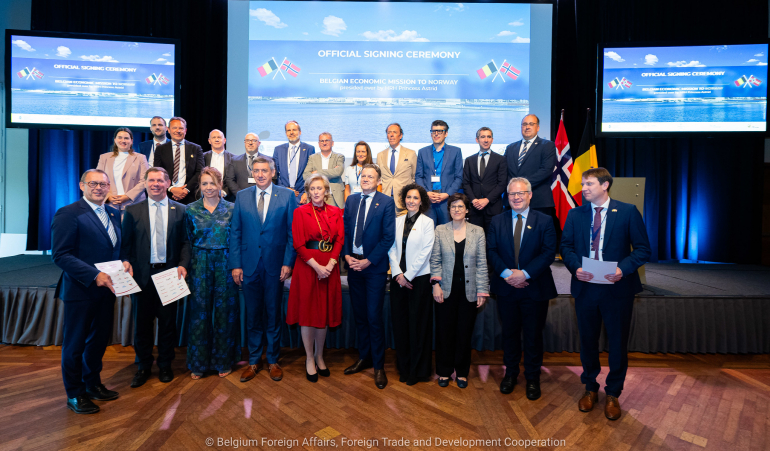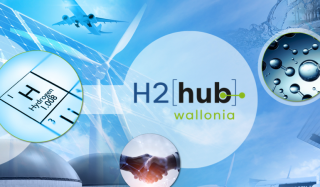
Steel industry, cement industry... Wallonia has factories that, despite their efforts to reduce greenhouse gas emissions, continue to be major emitters of CO2. To reduce their environmental impact in the face of the climate challenge while ensuring the continuity and modernization of its sectors, Belgium will develop the capture and storage of CO2 (Carbon Capture Systems - CCS) with its North Sea neighbors, especially Norway.
The Walloon backbone is the industrial axis that runs through the south of Belgium from Mons to Liège via Charleroi. This axis, a remnant of the old Belgian heavy industry, is filled with still-polluting companies. The steel industry, lime production, and cement plants are the most emblematic examples. All face the major challenge of reducing their environmental impact without threatening their existence, given their importance in the European economic structure, the need to shorten supply chains, and the necessity of maintaining industry on the continent.
In June 2024, Belgium organized an important economic mission to Norway, where several leading Belgian industrial companies (Lhoist, Carmeuse, ArcelorMittal, Holcim...) confirmed their intention to boost the capture at source of the CO2 they emit and then store it. "The heavy industry, which is very present in Wallonia, will always emit CO2. Therefore, solutions are needed to handle it to ensure their future," stated the Belgian ministers of environment and energy: "We must keep an open mind to see what technology can bring us. Producing lime and cement without emitting CO2 is not possible."
The challenge is to connect the factories to a network of pipelines that can transport this gas to strategic terminals, specifically Zeebruges and Antwerp (northern Belgium). This is where the project of a "CO2 highway" from Dunkirk/Zeebruges to storage sites makes sense to be operational by 2029-2030, if all signals are green. But where to store it?
Destination Norway
There are few places in the world where carbon capture and CO2 storage technology projects are as advanced as in Norway. The most advanced project is "Northern Lights," located in Bergen on the southwest coast of the country. During the Belgian Economic Mission, the Walloon cement factory Holcim (Mons) considered capturing, purifying, and liquefying the CO2 emitted during cement production on its site in Belgium. This CO2 would then be sent via pipeline to the ports of Antwerp or Zeebruges, where it would be loaded onto specialized ships bound for Norway. There, it would be "unloaded," stored in silos, and then sequestered in geological layers buried about 3000 meters deep in the North Sea.
The Norwegian project is 98% completed. Its ships, specially designed for this function, will soon be made available to major Belgian industrialists present at the Norwegian site. This is, of course, part of a broader Norwegian strategy: Producing green electricity from the North Sea and green hydrogen (other projects under construction with Wallonia), carbon capture and storage are indeed part of the solutions to decarbonize industries and contribute to reducing their impact on climate change. By connecting now with Norway, Belgian and Walloon companies aim to offer foreign investors the possibility to 'capture' their CO2 emissions at the source and directly connect them to North Sea storage sites. An additional asset in the portfolio of solutions to reduce and limit CO2 emissions.
Oslo Declaration: Connecting the Belgian Economy to Norwegian Storage Sites
The princely economic mission to Norway ended in Oslo with contract signings. The occasion for the Norwegian capital to lend its name to the Oslo Declaration, signed this Wednesday morning by about fifteen Belgian and international industrialists and handed over to the representatives of the outgoing Belgian governments.
These agreements are crucial for Walloon companies active in "carbon-intensive" sectors and provide a framework for specific agreements. Where the two economies converge is in the development, transport, and storage of energy. On the other hand, Wallonia is building itself into a Hydrogen Valley and a hub for CO2 transport/storage. The convergence is there, and several projects with Norway are currently being realized.
The Oslo Declaration was signed by companies Holcim and Heidelberg Materials, lime and dolomite producers Lhoist and Carmeuse, as well as Fluxys, the port of Antwerp-Bruges, TotalEnergies, Engie, ArcelorMittal, Air Liquide, and the Norwegian oil company Equinor (also active in CO2 transport and storage) to collaborate on the capture, transport, and sequestration of CO2 (CCUS) from industrial processes whose chemical reactions inevitably produce carbon.
Illustration : Belgian Ministry of Foreign Affairs








